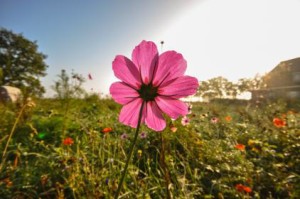How to Identify Wildflowers That Will Thrive for You
 While the clipped hedges and patterns of a formal garden are lovely in their own way, wildflower gardens boast an easy, breezy beauty that shine also. Best of all when you identify wildflowers indigenous to your area and incorporate them into your garden, they can thrive. Here are a few tips on how to identify wildflowers that will thrive for you with minimal effort on your part:
While the clipped hedges and patterns of a formal garden are lovely in their own way, wildflower gardens boast an easy, breezy beauty that shine also. Best of all when you identify wildflowers indigenous to your area and incorporate them into your garden, they can thrive. Here are a few tips on how to identify wildflowers that will thrive for you with minimal effort on your part:
1. Find Wildflowers Truly Native to Your Area
Just because a flower grows wild in your area now doesn’t mean that the flower is indigenous to the region or even to North America. There are flowers, like Queen Anne’s lace, which escaped cultivation to go rogue. Even though they grow like weeds across the country, they are not true wildflowers. The best way to identify wildflowers that are truly wild and native to your region is to pick up a wildflower handbook.
2. Find the Best Source for Wildflowers
Once you’ve discovered which flowers are native to the region you can obtain them in one of two ways. You can order them as mature plants from a professional nursery or you can order wildflower seeds and grow them yourself. It may be cheaper to purchase seeds, but far less work to obtain them through the nursery.
3. Decide Where the Best Place to Plant Your Wildflowers is
As with any flower, you want to choose a location that is suitable to your plant’s needs. Does the flower require full sun, partial sun, dry soil or a damp environment? Native wildflowers are perfectly adapted to certain conditions in your area…provide those conditions and your flowers will require very little attention from you. If you think about it, these flowers are programmed to thrive in specific situations. Plants which grow in heavy shade, for example, will often produce blossoms in the early spring before towering trees leaf out and block the sun needed to create a flower. Go with what’s natural.
4. Integrate or Segregate – That is the Question
The last question to be answered is whether you want to integrate wildflowers into your existing flower beds or segregate them into their own carefree garden space. The answer is entirely a matter of personal taste.
Once you’ve made your wildflower plans, be sure to check out Kincaid Plant Markers so that you can order quality garden markers to properly label your beauties. Visitors to your garden will enjoy learning the proper names of indigenous plants. You’ll enjoy knowing that by using native flowers you have aided local wildlife who depend on local species and you’ll really enjoy how easy they are to nurture. Now, while it’s still early, identify wildflowers from your area and make a plan for adding them to your landscape.
